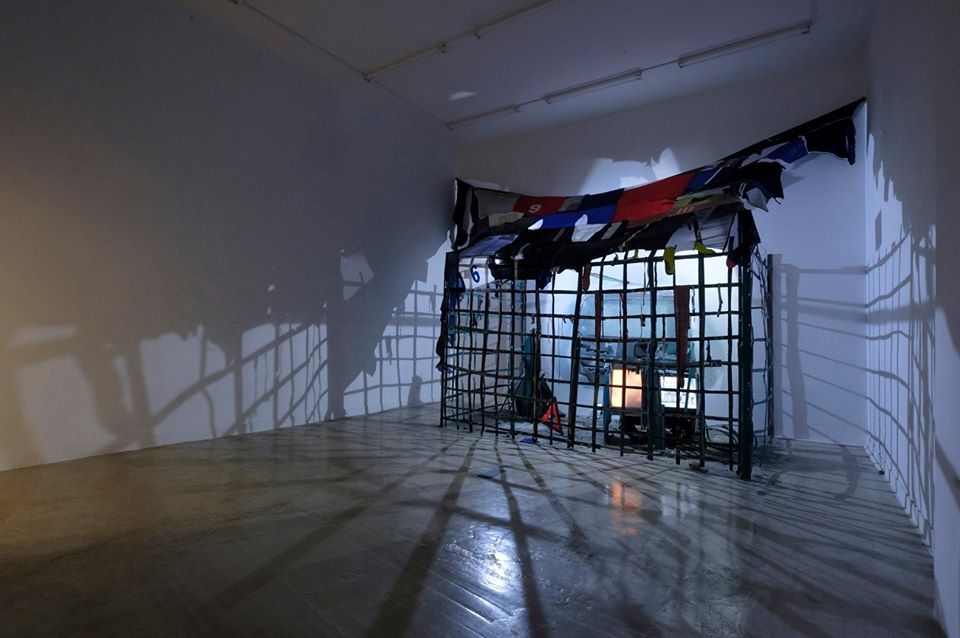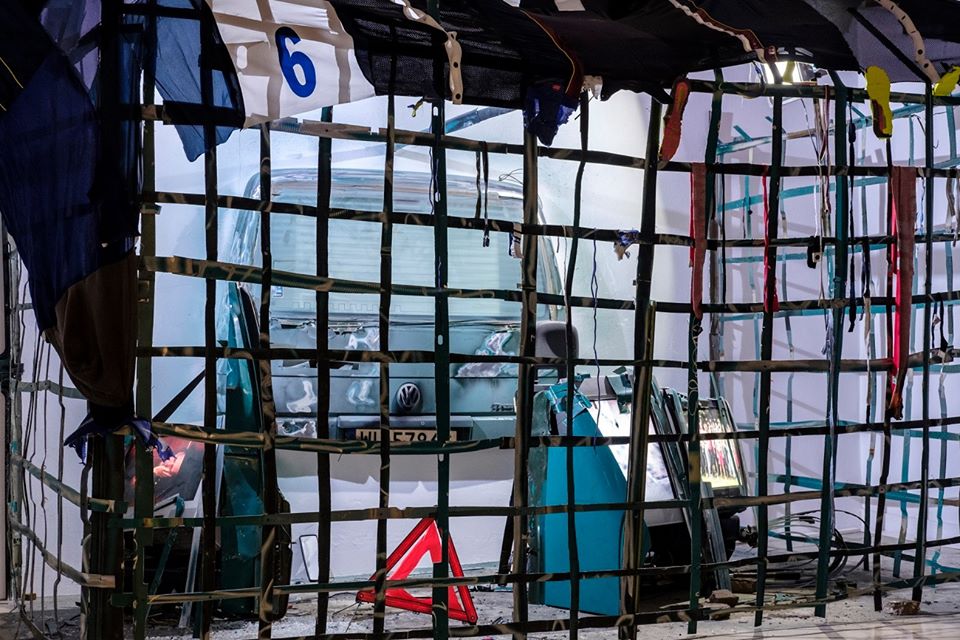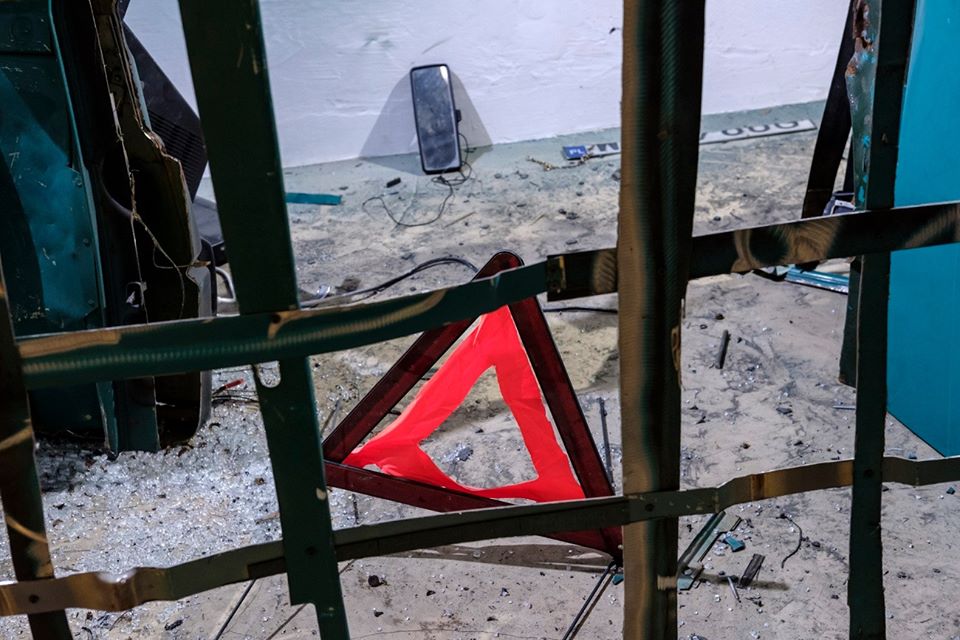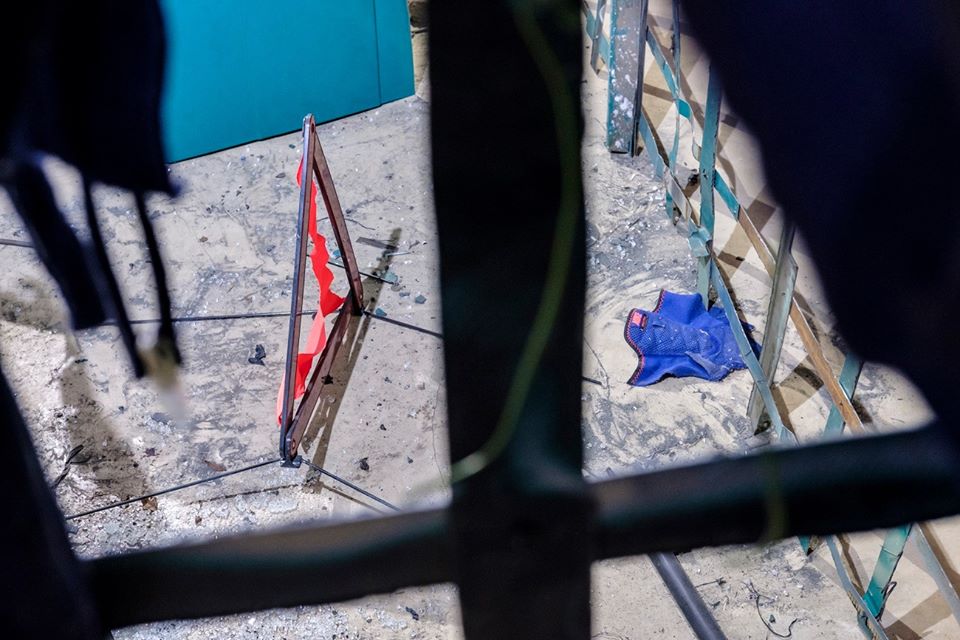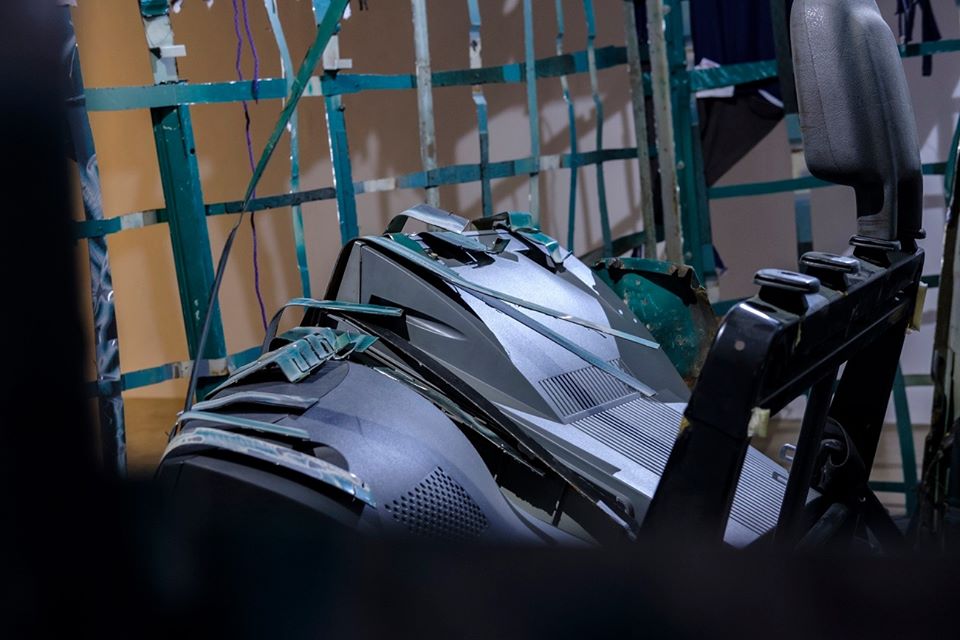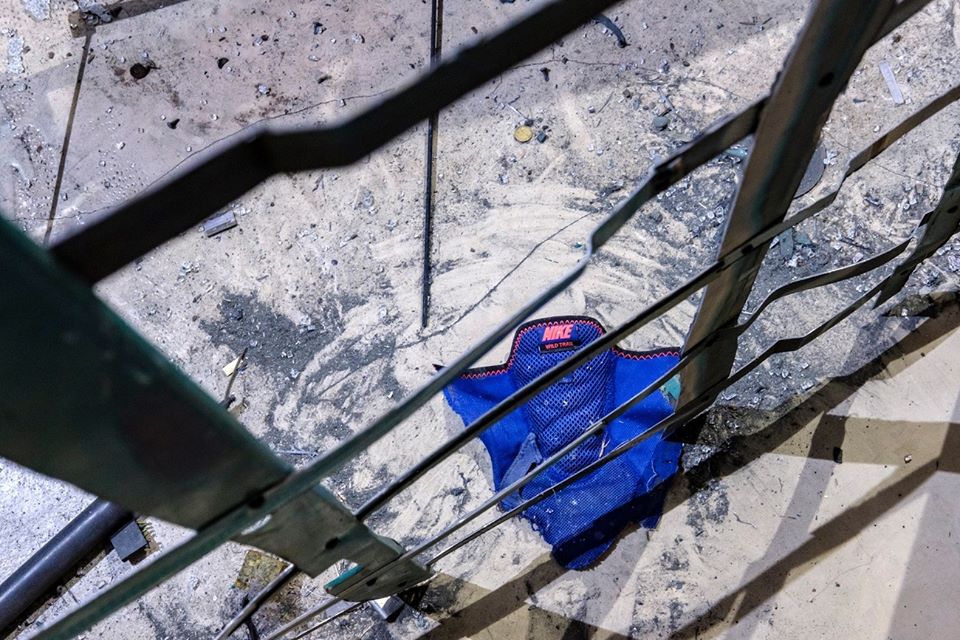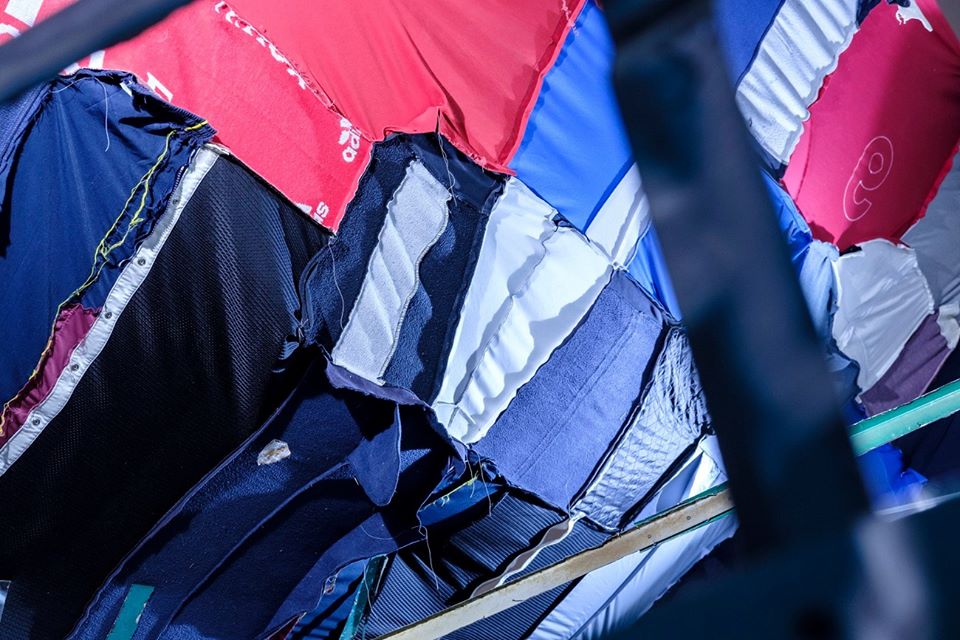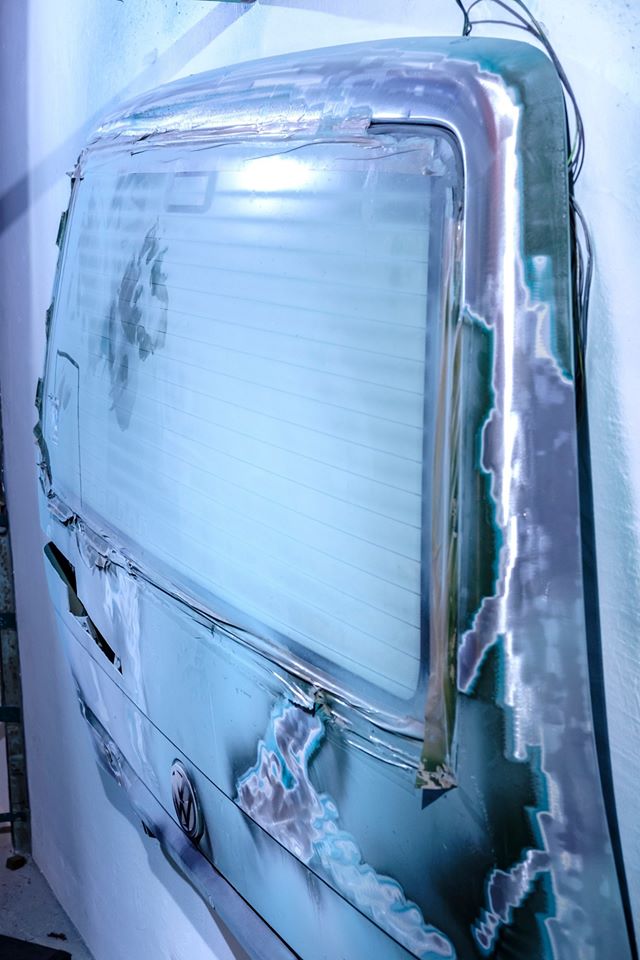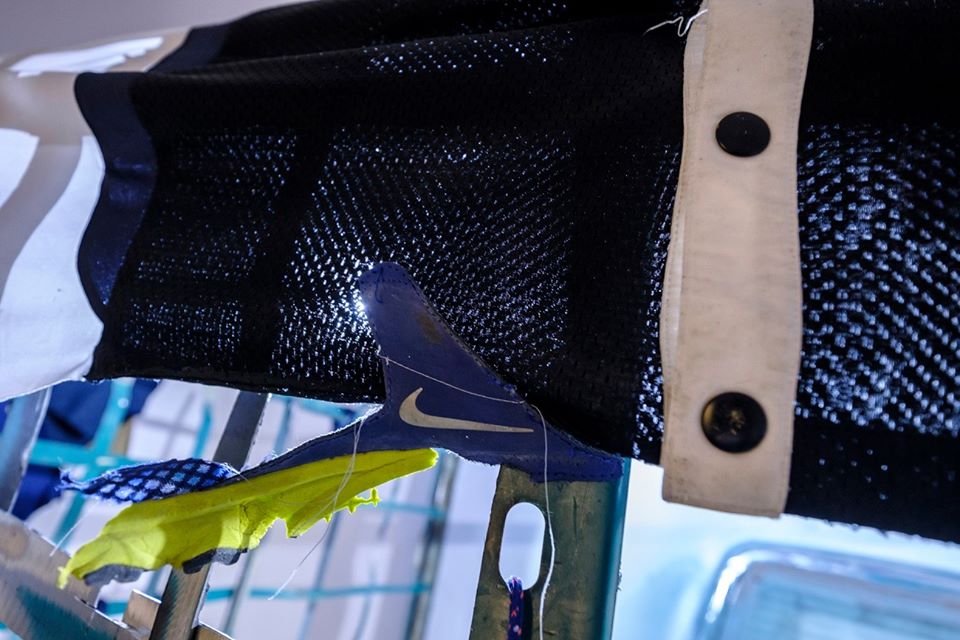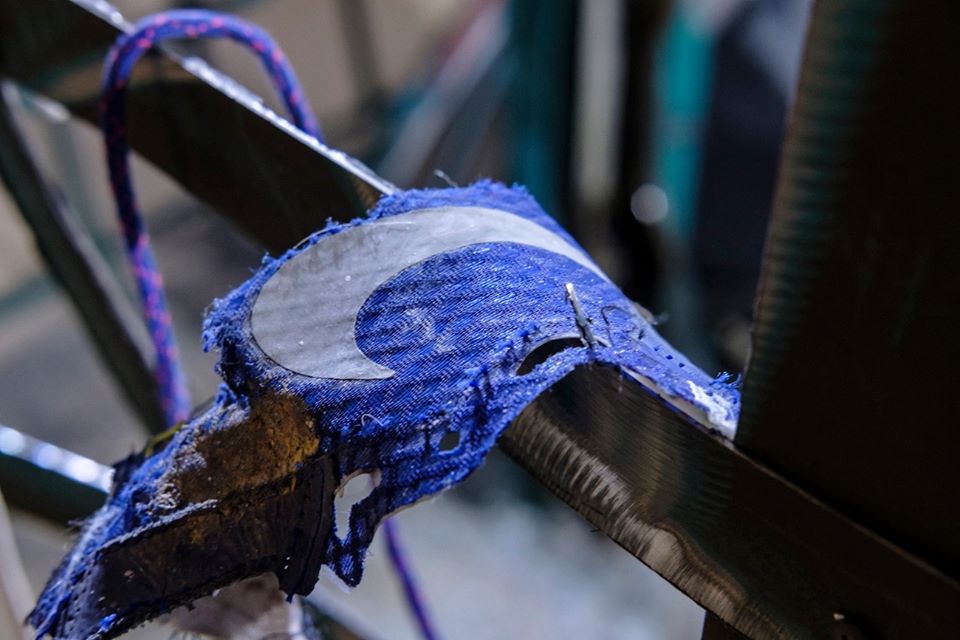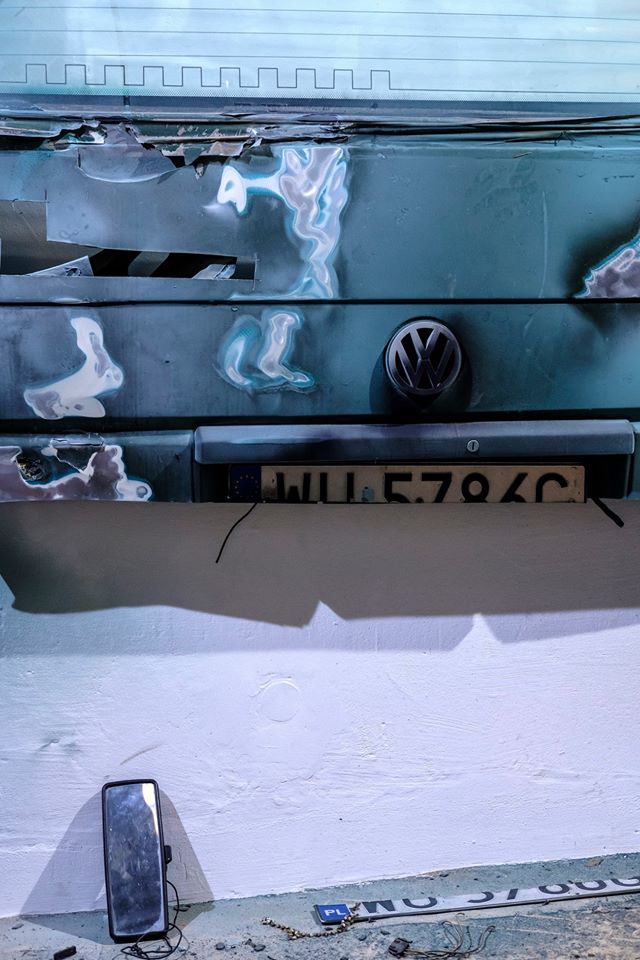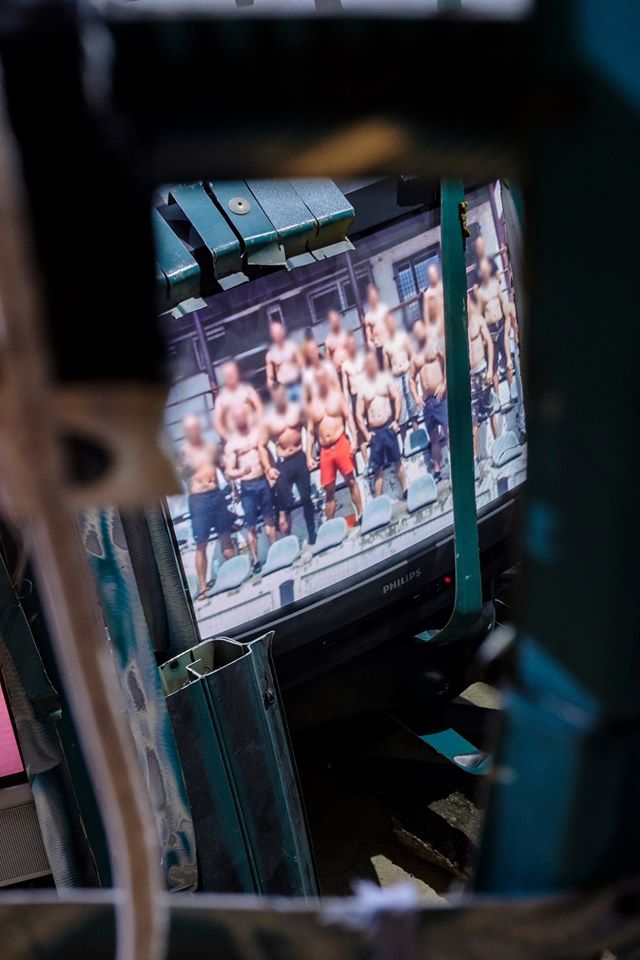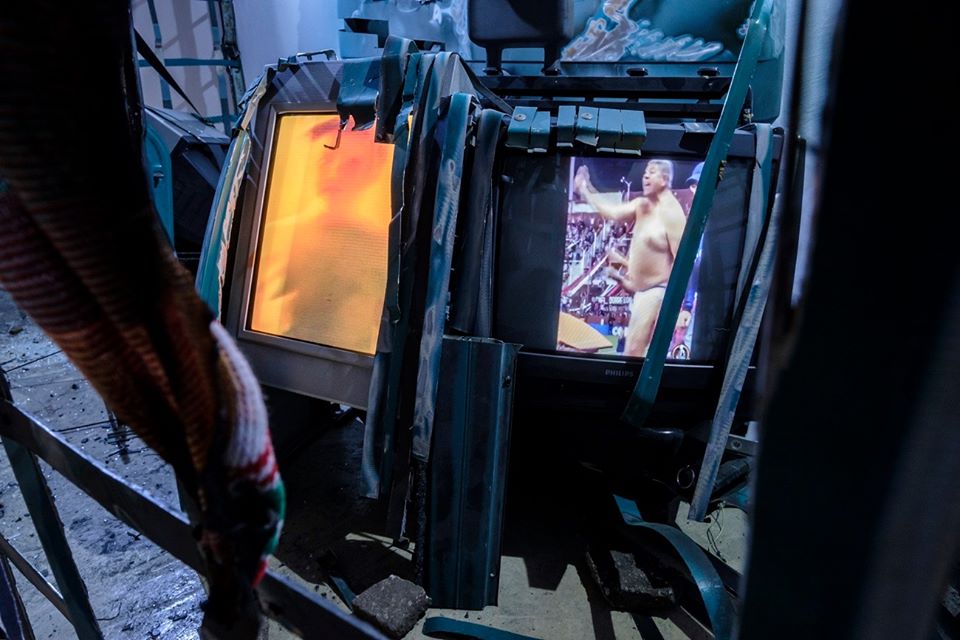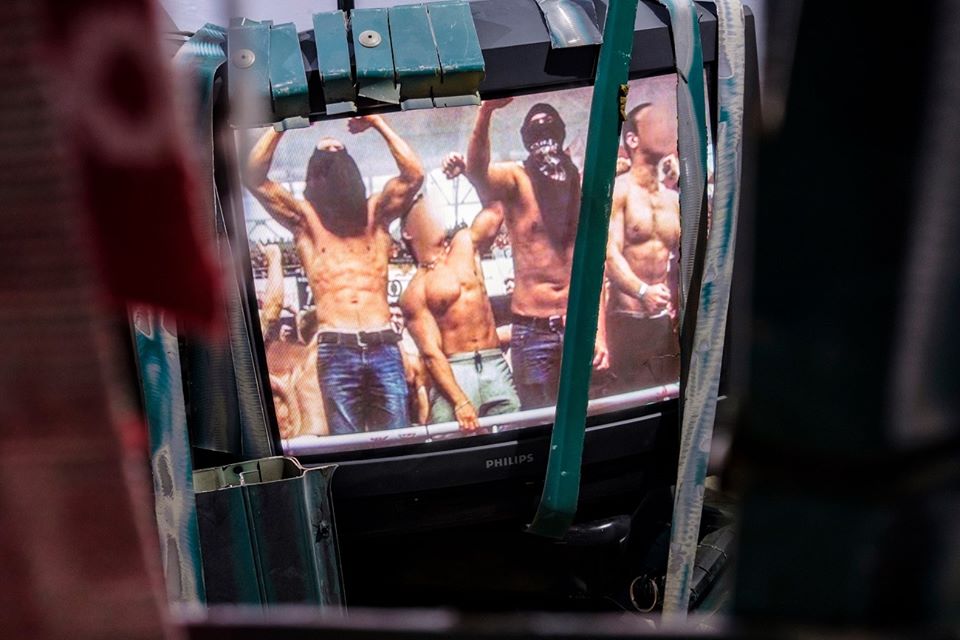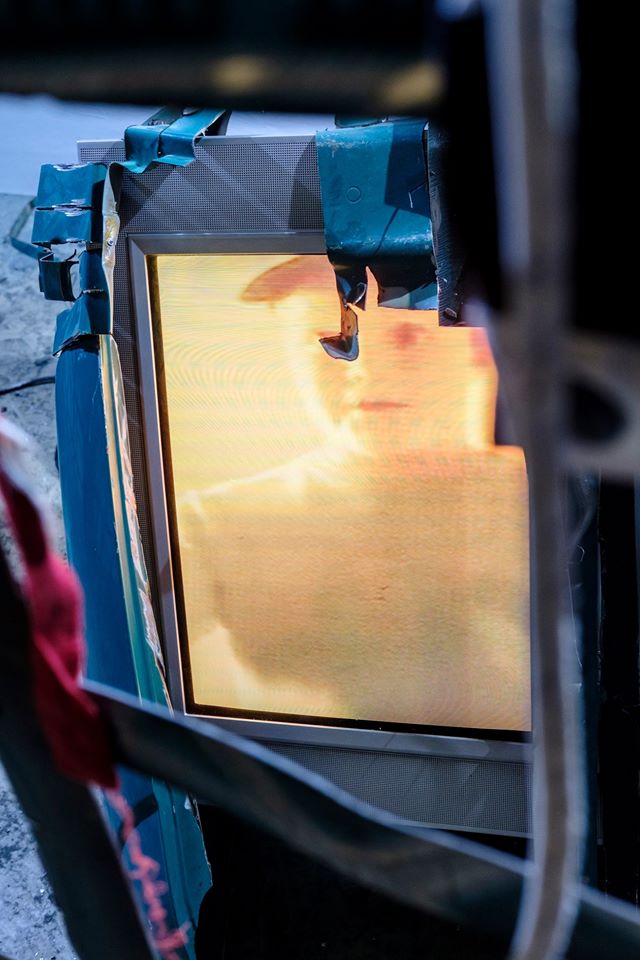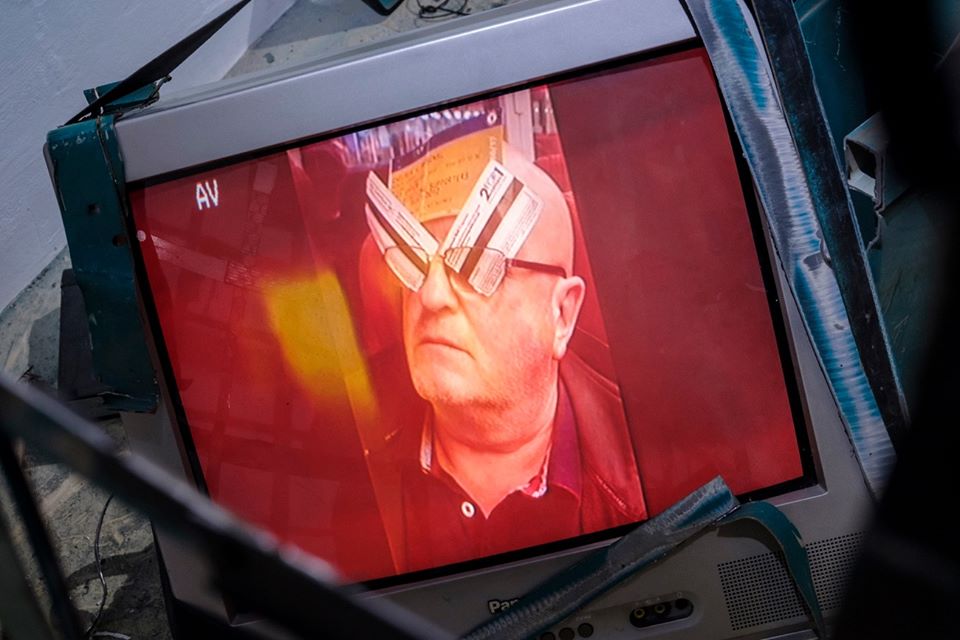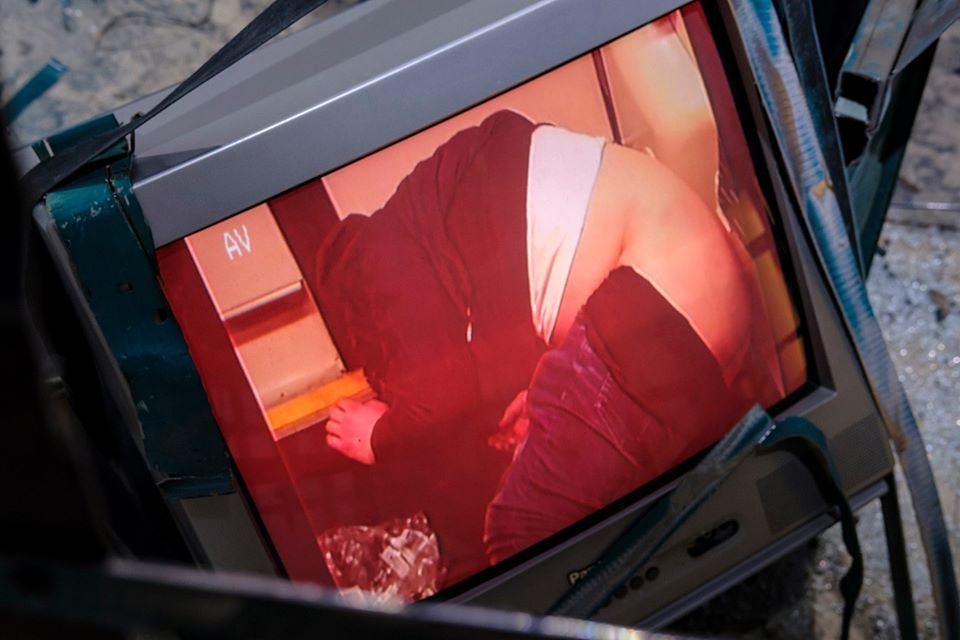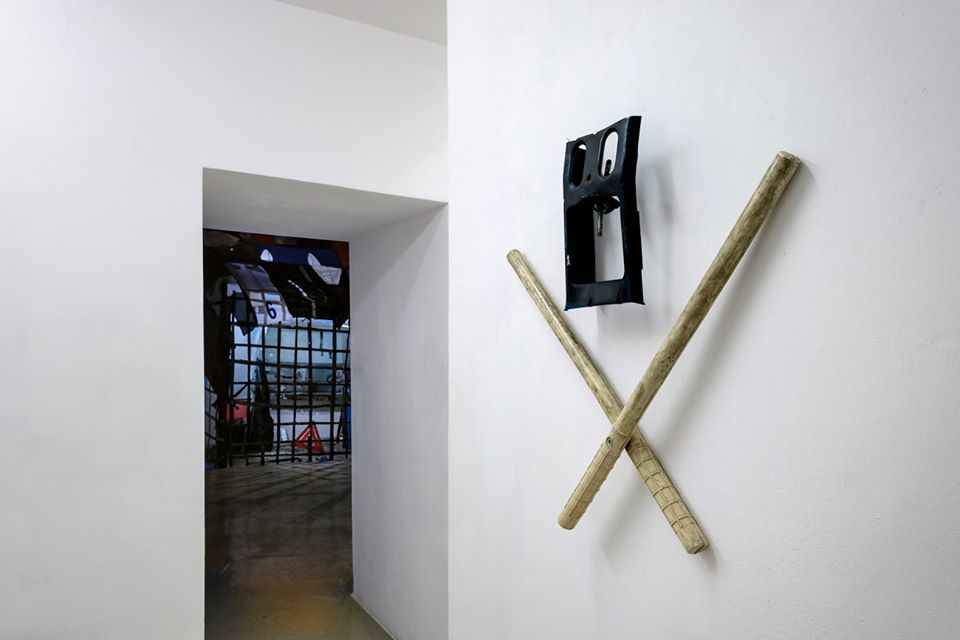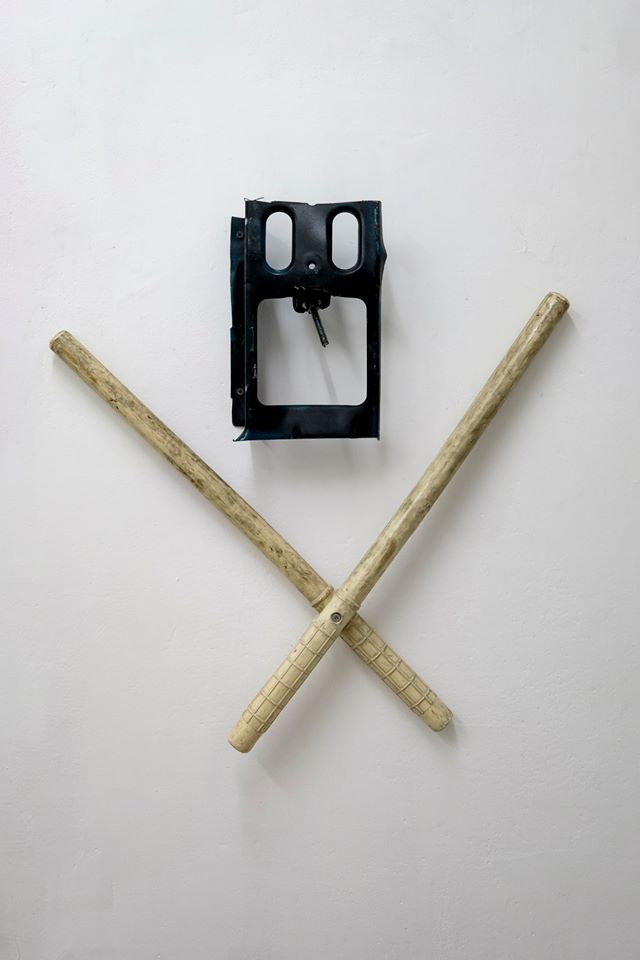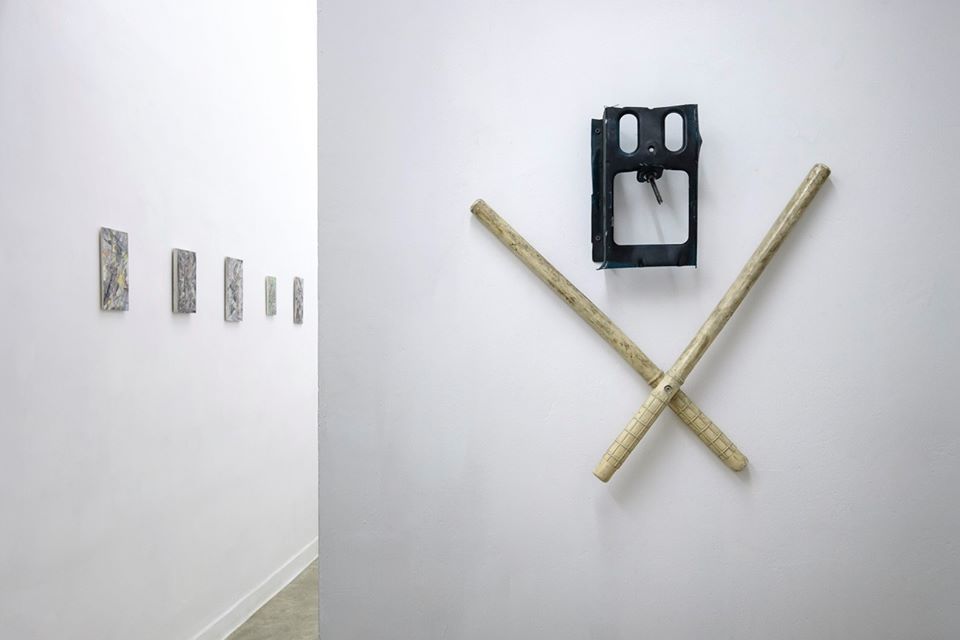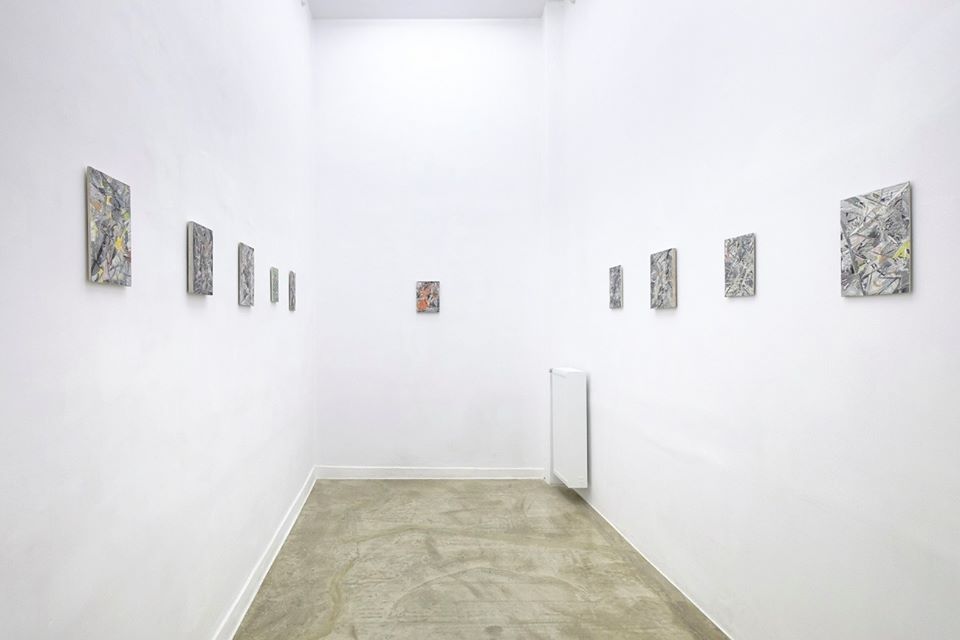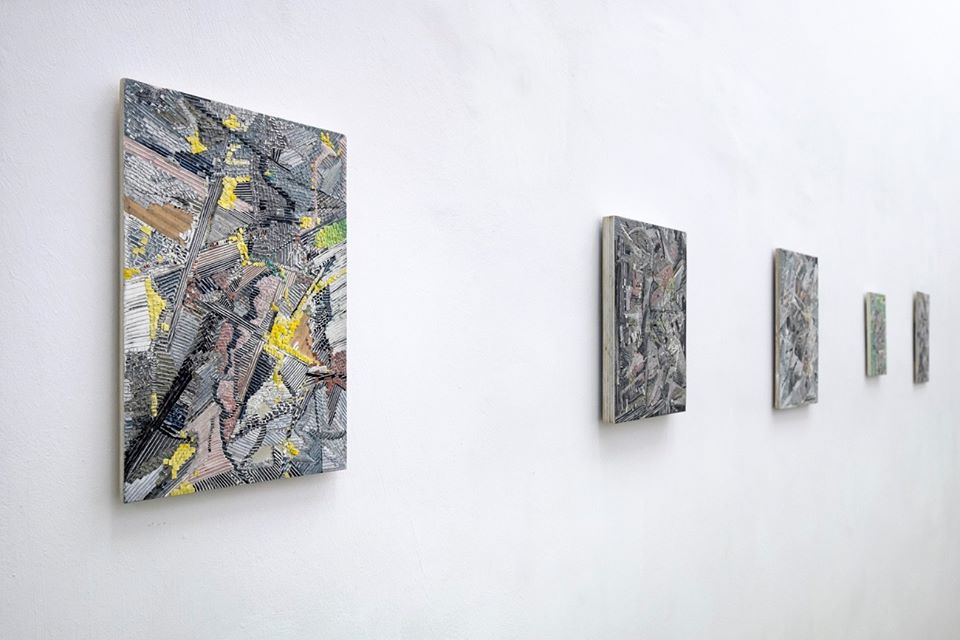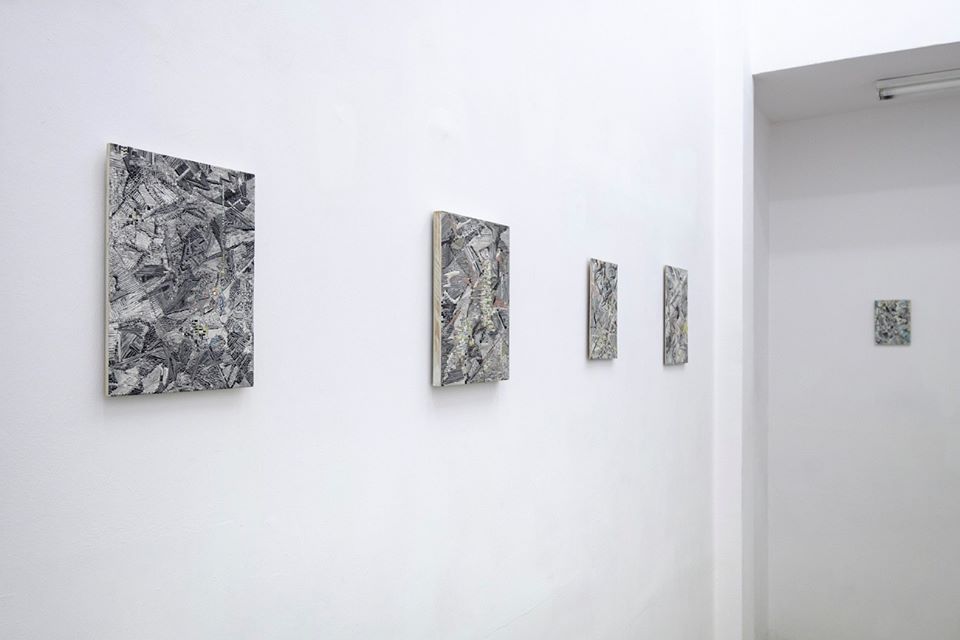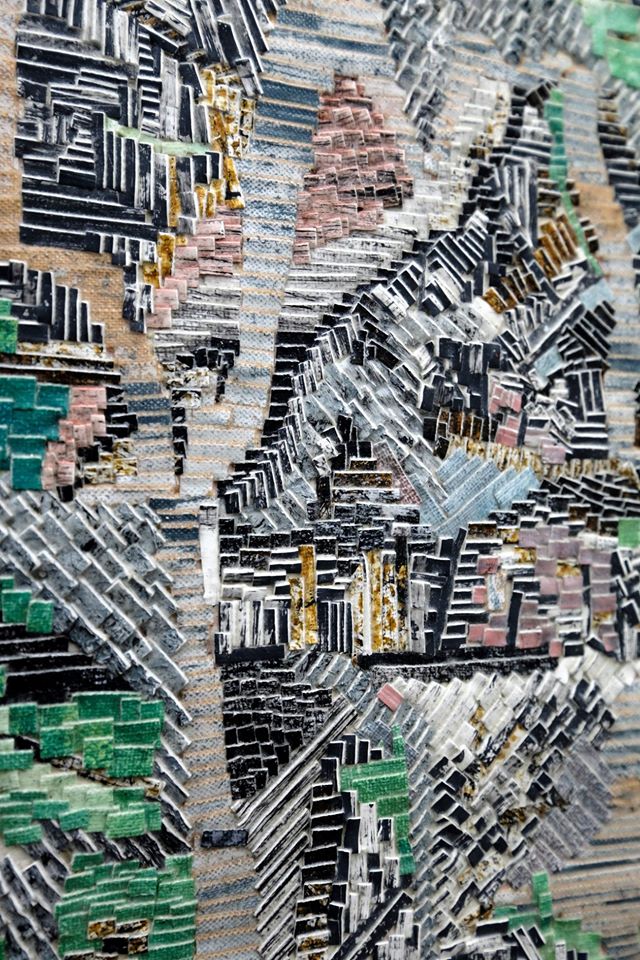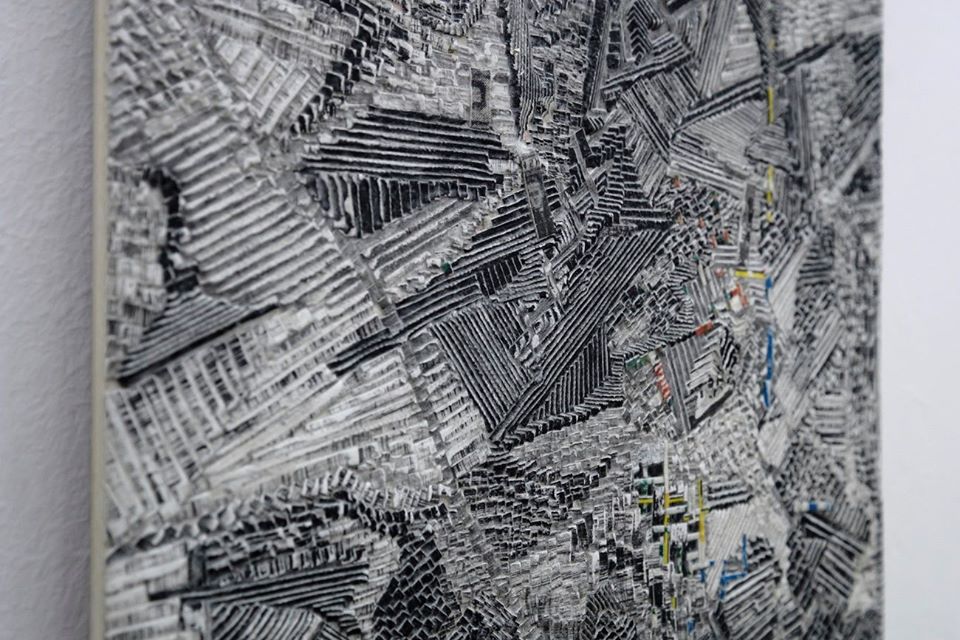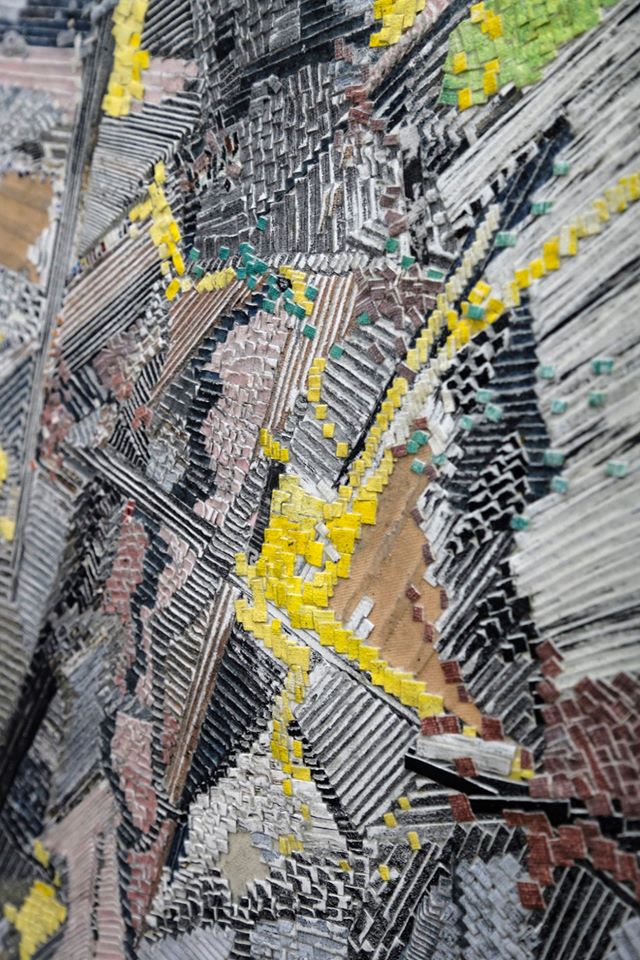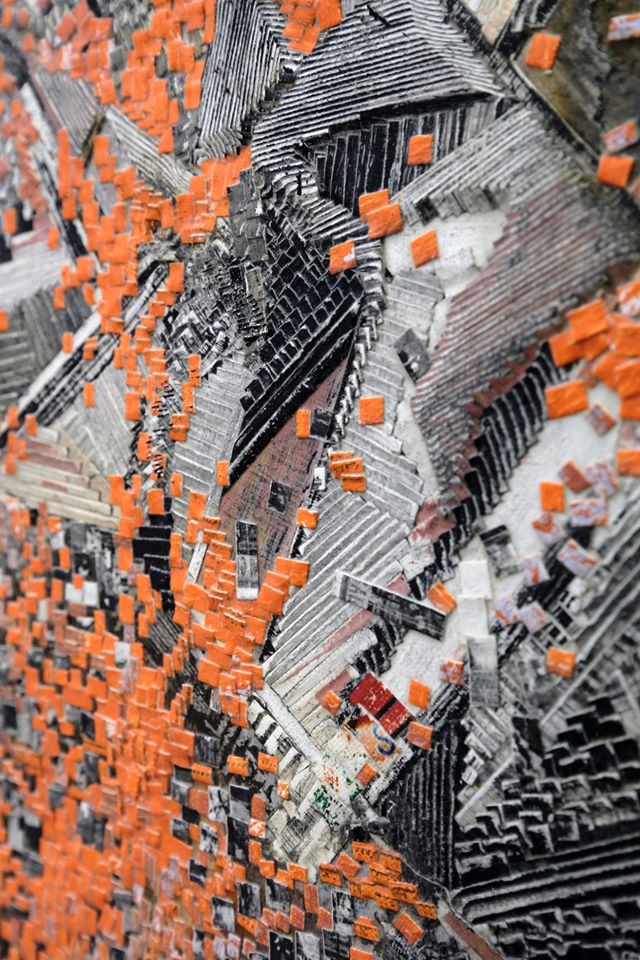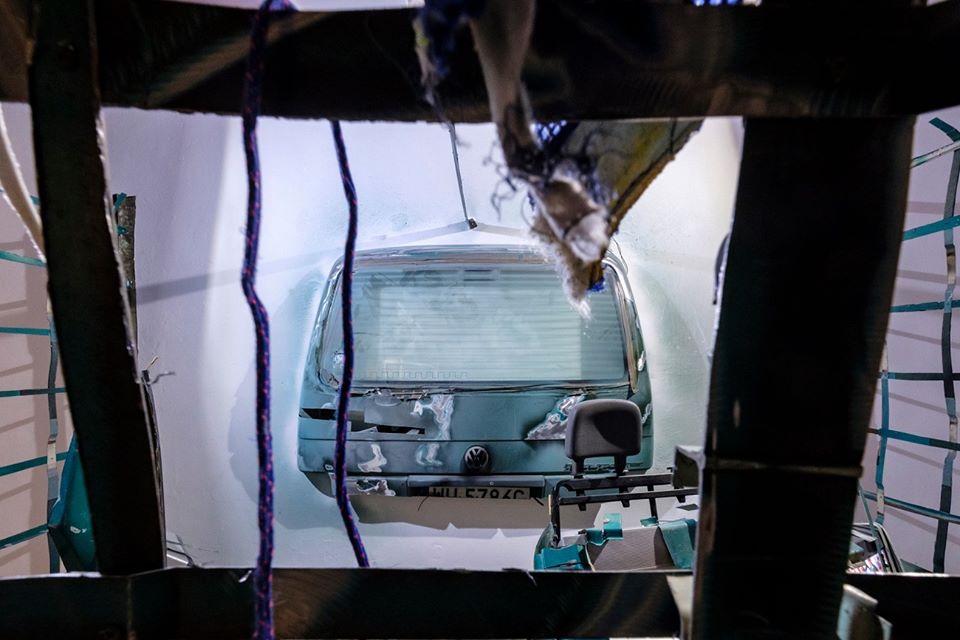Artist: Marcin Dudek
Title: Trans Hooligans
Venue: LETO, Warsaw
Photo: Bartosz Górka
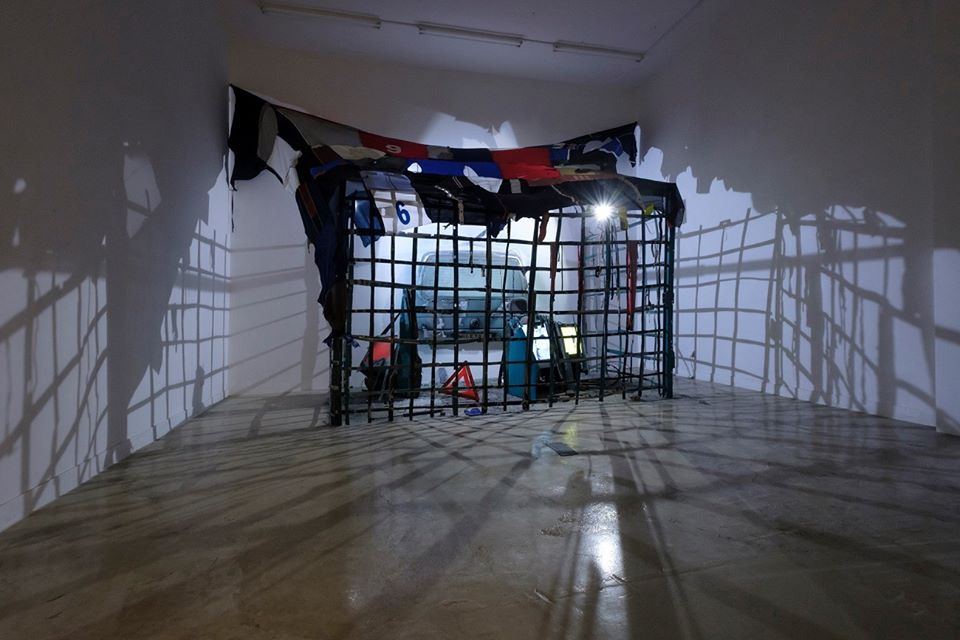
The scorching summer days of 1995. Marcin was no more than 16 years old at the time. He and his brother were on a bus from Krakow, along with a group of young football fans on their way to a match in Bialystok. In the world of football fandom, trips to see their favorite team are no less than a holiday, long-awaited and well-prepared for. This is especially true in the case of a young person from the Podgorze district of Krakow. For these kids, the road to Bialystok played out as an exciting adventure into the unknown. And yet, the trip never happened – neither Marcin, nor the other people in the group made it to their destination.
They’d stopped to stretch their legs at the Hutnik Warszawa Stadium. They got a tip from Polonia, a friendly team from the capital, that fans of the opposing team Legia Warszawa were there. These fans from Krakow spilled out of the bus onto Marymoncka Street as the driver waited for them with the engine running, becoming more and more bemused as the minutes wore on. Marcin remembers a great deal of smoke and the chaos of policemen on horses clashing with the horde of young football fans. The whole thing happened in the wink of an eye. Then they were all back on the bus and heading on to Bialystok. Yet a bit further on, they were stopped by the police. They spent 8 hours in a muggy cell at the police station in Zoliborz, waiting to be questioned. Incidentally, the station is not far from where this exhibition of Marcin Dudek’s works is taking place. This sort of biographical motif that trails the path of a football fan and getting cut off along the way, barring him from arriving at his destination, becomes the prevailing theme among the works of Trans Hooligans as part of the exhibition at the LETO Gallery.
The main component of the exhibition is taken up by an installation whose foundation is a deconstructed Volkswagen Transporter. There isn’t much left of its original form, having been cut up into strips that were then worked into a “cage” or “cell.” The cage is a characteristic element of ultra culture – we see them at the stadium, but many of the
most fervent fanatics also end up in a cage after getting picked up and transported to the police station. Just like Marcin on his ill-fated trip to Bialystok.
The space of the cell has been covered in a flag made of fabric quilted out of the characteristic elements of ultra garb – training pants, tops, sport shoes, custom scarves and caps. Such quilts often cover up a whole group of football fans, unifying them beneath the symbols and hues of their favorite team. In this instance, the unifying element is the characteristic “look” of the ultra. It operates on the basis of a phantasm or fetishism of masculinity that has been cultivated in the fanatic subculture of football enthusiasts – which is raw, at times aggressive and even toxic.
In his installation, Dudek puts together a few key symbols related to this particular subculture and its environment – road trips to see a game, these quilts, this model of masculinity and the concept of the cage, which often clinches all the elements together. Yet this is not all – beneath the façade of radiating manly strength and testosterone, a space has been shaped which Marcin fills with the most “intimate,” even the most shameful and disparaging stories, which pulsate quietly beneath the surface of this environment. One of the screens shown in the exhibition shows a looped series of photographs depicting ultras sleeping in the “ashtray pose” or lulled to sleep by their drink of choice, those whose only function is to sway between one match in the next, numb to all the other changes and problems in the world around them. Another series of videos show a mumbling mashup of ultras boasting about what hooliganism they’d just gotten up to. One more screen present a collection of fleeting images and videos of hools reveling in their own flesh. Groups of men pose shirtless, flexing their oiled muscles, while others run out naked onto the pitch or show off their naked asses – these are the everyday rituals of football hooligans culture. These types of manifestation of supreme masculinity are particularly emblematic of football fanatics from Poland. Once the clothes come back on, there’s an entire arsenal of garments and accessories – from the sneakers, training gear and socks, caps and balaclavas, which, on the one hand, are a visual element of their common membership within the group and, on the other, a fetishistic form of expression.
When I was looking through at the visuals for the exhibition, as a gay man, at times I found myself noticing the expressly erotic character of this imagery. To put it plainly, some of these shots of hools are almost indistinguishable from the framing of gay porn – the sorts of orgies or group sex that take place every weekend in someone or other’s apartment. The cult of the muscled body, the sportive accoutrements and fetishes, masculinity radically manifested in tandem with a touch of vulgarity – that’s the essence of both of these situations, as distinct as they may seem on the surface. The only difference is that LGBTQ culture is more aware of these visual connotations, while football hooligans, with all their homophobic tendencies, are, for the most part, blissfully ignorant of the homosexual frames they replicate on a visual basis continuously.
In a smaller section of the exhibition, there are 11 collages created in a style typical of Dudek’s work, which bits of tape pasted onto a wooden pane, which ultimately take shape in dynamically abstract structures, often reminiscent of crowds of football fans as they might be seen from a bird’s eye view and the contemporary architecture of the stadium. This series was dedicated to a group of select footballers, whose silhouettes were translated into these abstract forms. We see their names in the titles of these collages: Noel, Saidi, Takesure, Emmanuel, Kalu, Ebénézer, to name a few. They’re all black players who have joined the ranks of Polish teams over the years.
Their trip to Poland in the early 1990s must have been an exotic experience. The first to make his way over was Noel Sikhosana, who joined Wisla Krakow. On the 30th of March 1991, he played for the first time (and his last) in a match against Zaglebie Sosnowiec. It was his presence on the football field that gave rise to so much emotion. These were motions that were more intense than the already high level of emotions involved in ultra fandom. He and others like him had to suffer the hard lesson of Polish racism, starting from bunches of bananas tossed onto the field and the dubious overtones of newspaper articles and interviews. For many of these players, their stints in Poland were a passing phase, not quite a permanent destination for making their football fantasies come true, and they didn’t stay for long.
Beginning from the biographical experience of his unsuccessful trip to see a football game, Marcin Dudek sketches out a whole spectrum of critiques of the radical nature of the ultra community, which he had once been a part of. And yet, this critique smashes the homogeneous guise of this subculture from within, shedding light on its silent or silenced aspects, which are irrevocably its part and parcel. Built upon the foundation of a constant pursuit, and the countless travels this pursuit of radical masculinity entail, the artist reveals the homoerotic nuances that pulsate throughout a community which, at the same time, is known for espousing extremely homophobic beliefs. Through the story of these black players who joined the Polish league of football teams, Marcin Dudek shifts the emphasis to the problem of racism, one of the flagship manifestos of football hooligans culture. And the entertaining aspect of the “found footage” featuring sleeping football fans in travel becomes a symbol of a general numbing of this subculture to any external problems or crises happening in the real world.
The Trans Hooligans in the title is partly an ironic attempt to reference the name of trucking companies, or even the Volkswagen Transporter itself, whose sliced-up bits make up the foundation of the show. And yet, the greatest emphasis should be placed on the transgressive processes running through the world of ultras and its entrenched hooliganism. This is the world that Marcin Dudek opens up through this exhibition and his own hybrid existence at the edge of true ultra fandom and the world of art.
text: Sebastian Gawłowski
